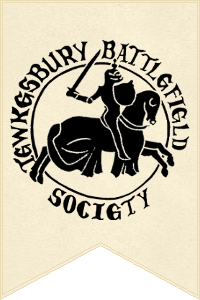April 15th 1471: The battle is over but the war goes on
Cerne Abbey as it might have been before dissolution in 1539
Robert Fabian’s Chronicle describes the aftermath of the battle of Barnet:
‘Of the mists and other impediments which fell upon the lord’s party, by reason of the inactations’ wrought by Friar Bungey, as the fame went, me lyst not to write. But truth it is, so after this victory thus won by king Edward, he sent the dead corpse of the said marquis & earl of Warwick unto Pauls Church, where they lay. ii. days after naked in ii. coffins, so every man might behold and see them. And the same afternoon came king Edward again unto London, and offered at the rood of the North door in [St] Pauls, and after rode unto Westminster and there lodged him. And soon after that the king was thus passed through the city, was king Henry brought riding in a long gown of blue velvet, and so conveyed thorough Chepe unto Westminster, and from thence unto the Tower, where he remained as prisoner all his life time after’.
Friar Bungey was a mystic who is said to have used magic to try to frustrate Edward’s army.
Warwick and his brother were released for burial at Bisham Abbey after two days in public view, which was done primarily to show the world that they really were dead. There was no mutilation or heads displayed on London Bridge; Edward was trying to calm things.
Poor ex-King Henry was still dressed in the unkingly blue gown that he had been paraded around London wearing before the battle, and in which he must have been taken to the battle by Edward.
Meanwhile, in the South West, other Lancastrians were stirring.
After many attempts to cross the channel, Margaret’s fleet had succeeded. They had been separated and the Countess of Warwick, wife to the Kingmaker, made land at Portsmouth. Whilst travelling towards the rest of the party she had news of the battle at Barnet and the death of her husband. She changed her plans, and headed for Beaulieu Abbey, where she sought sanctuary. She was to remain there for the next two years.
Margaret had arrived at Weymouth, accompanied by her son Edward, his wife Anne, Lord Wenlock and John Langstrother, who was Prior of the Order of St John. They had arrived on the day of the Battle of Barnet, though they didn’t know then that their plans would all have to be re-thought. The party had made their way to Cerne Abbey where they had spent the night. She was greeted by Sir Edmund Beaufort, the Duke of Somerset and Sir John Courtney, Earl of Devonshire, the Lancastrian die-hards who had turned their backs on Warwick.

